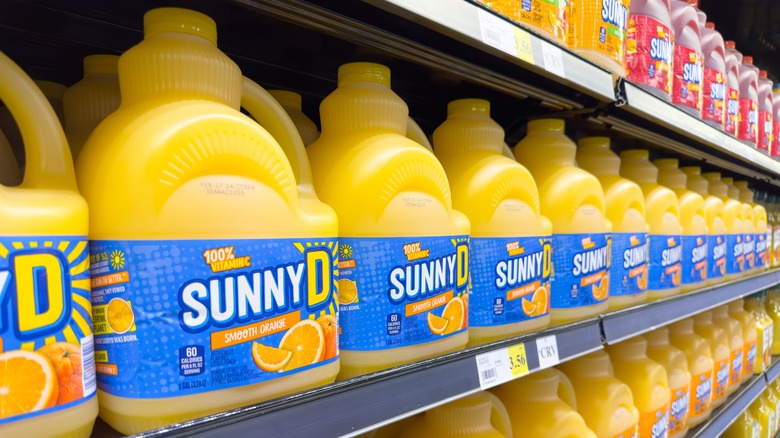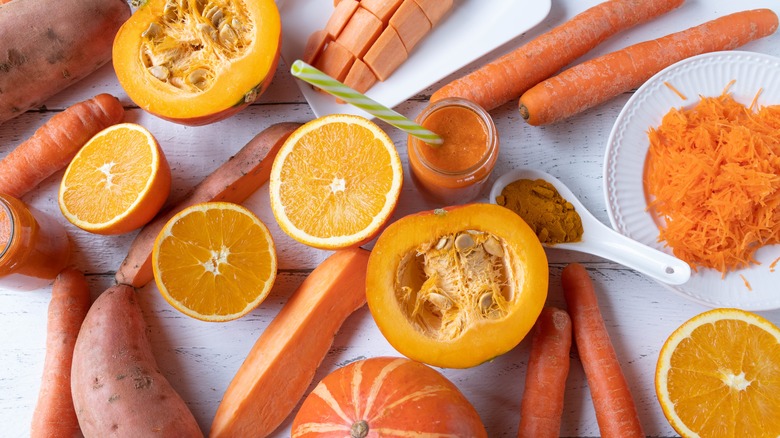Who Else Remembers When SunnyD Turned A Girl's Skin Orange?
Back when I was growing up, SunnyD was always touted as the healthy alternative to soft drinks like soda and Kool-Aid. And even though it appears similar to orange juice, it's barely related — it's made primarily with water and high fructose corn syrup, with 2% or less concentrated orange juice, concentrated tangerine juice, concentrated apple juice, concentrated lime juice, concentrated grapefruit juice, and concentrated pear juice.
Its name evokes vitamins, but even though it's called SunnyD, there's no vitamin D in it. Instead, it has vitamin C in the form of added ascorbic acid. These days, the color of the drink comes from ingredients like Yellow 5 and Yellow 6, which are food-safe additives that give the drink its "sunny" hue, but back in the day, it used to be colored with beta-carotene, which is a red-orange pigment that occurs naturally in yellow and orange fruits and vegetables.
Back in 1999, a controversy erupted over the drink when it was blamed for turning the skin of a four-year-old Welsh girl's face and hands orange. This was a public relations nightmare for the company and tanked the beverage's sales. It seems highly unlikely that a drink can actually change the color of someone's skin, but it turns out that in large enough quantities, beta-carotene can in fact do this, and based on the quantity of SunnyD she was drinking, the beverage was probably the culprit.
Large amounts of beta-carotene can change the way you look
Wildly enough, beta-carotene is capable of changing your skin tone. Granted, you have to ingest a huge amount for it to alter your physical appearance. The four-year-old had been consuming a whopping 1.5 liters of SunnyD per day, which is quite a bit for someone with a small frame.
There's even a name for this condition; it's called carotenemia. If you consume large quantities of beta-carotene over the span of months, areas of your body with thick skin such as the soles of your feet and the palms of your hands can turn orange. This occurrence can be mistaken for jaundice, which involves the telltale yellowing of skin due to bilirubin buildup in your body because of liver issues.
In more extreme cases of carotenemia, the skin all over someone's body can turn yellow. Infants that have been fed pureed vegetables, typically carrots, can have yellowed skin because of this. In fact, a friend of mine told me his nose once turned yellow as an infant due to him eating too much carrot baby food. So it's not entirely unlikely that the SunnyD was what turned the Welsh girl's skin orange.
Fortunately, carotenemia is reversible. All you have to do is stop consuming large amounts of beta-carotene, and in a week to a few months, your skin's tone should return to normal. And don't worry — since today's formulation of SunnyD no longer contains beta-carotene, drinking it in large quantities now is a non-issue, at least in terms of what color your skin will be.

